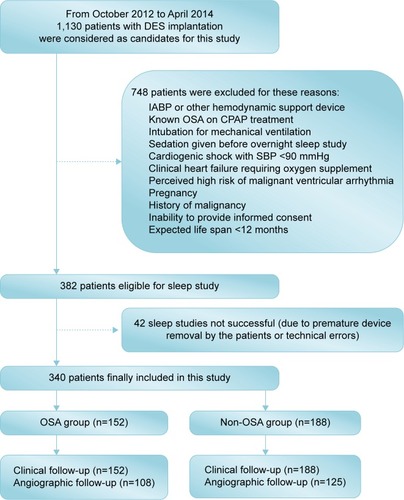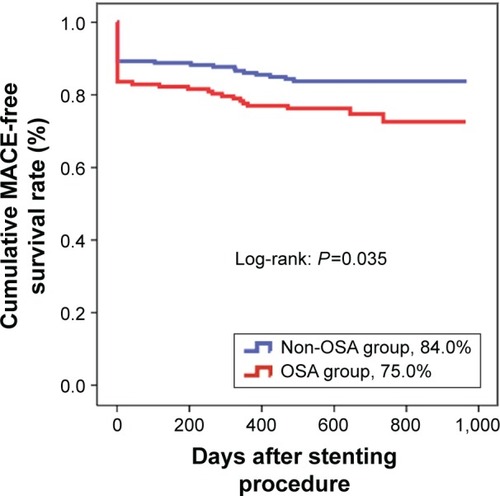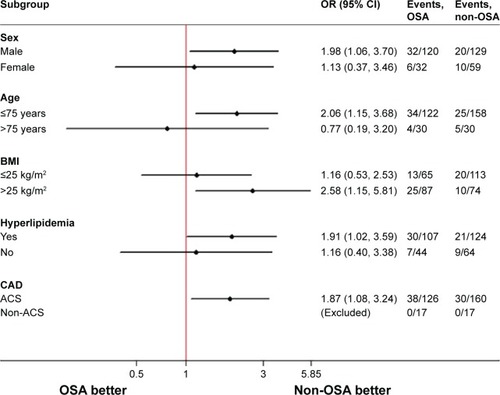Figures & data
Figure 1 Flowchart of study design.

Table 1 Baseline clinical and sleep characteristics of the OSA and non-OSA groups
Table 2 Angiographic and procedural characteristics of the OSA and non-OSA groups
Figure 2 MACE-free survival rate at 2 years.
Abbreviations: MACEs, major adverse cardiac events; OSA, obstructive sleep apnea.

Table 3 Clinical outcomes in the OSA and non-OSA groups
Table 4 Univariate and multivariate analyses for MACEs
Table 5 Quantitative coronary analysis of the OSA and non-OSA groups
Figure 3 Forest plots of 2-year MACE rate in the prespecified subgroups.
Abbreviations: ACS, acute coronary syndrome; BMI, body mass index; CAD, coronary artery disease; CI, confidence interval; MACEs, major adverse cardiac events; OR, odds ratio; OSA, obstructive sleep apnea.

